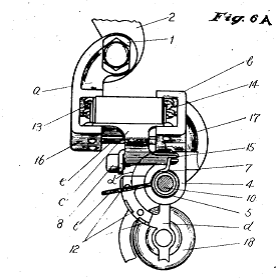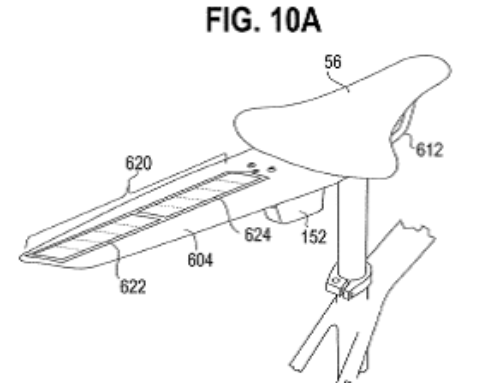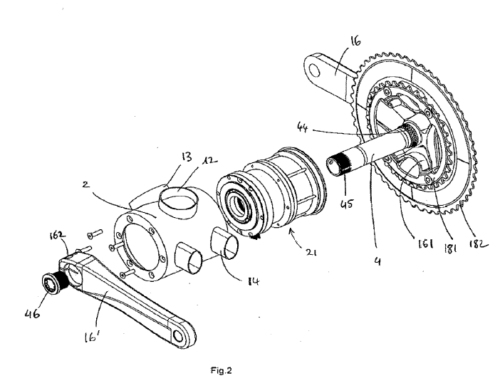
Expiring patents and new inventions can be a hot topic in business. Patents are often mentioned as limiting the release of a new product from more than one manufacturer. Which of course, is exactly how the patent system is intended to work. Does it follow that when a patent expires, the floodgates open and wider product offerings hit the market?
Intellectual property rights come mainly in three types: trademarks, copyrights, and patents. Trademarks are a word, phrase, symbol, or design that identifies goods or services, and can carry on perpetually – there’s no future expiration for the names Coca-Cola, Trek Bicycles, etc., so long as they continue to be used. Copyrights currently have a term of the author’s life plus 70 years (with some variations) – after that, rights are in the public domain. Consider the numerous Sherlock Holmes movies and TV shows in the last decade. The copyrights expired, and the floodgates opened.
Utility patents, meanwhile, have a much shorter life, spanning 20 years from when an application is filed (design patents, which protect ornamental appearance, expire 15 years from the date of grant). When a patent expires, the rights claimed in the patent move into the public domain, meaning anyone is free to make, use, or sell the invention. Pharmaceuticals going “generic” when an underlying patent expires is a good example.
Very occasionally, a bicycle-related patent will reach the end of its 20 year life, and a rush of similar products follow from competitors, showing the significance of expiring patents and new inventions Sometimes, those generic products blend the patented-design with newer technology. The classic, transformative example, though almost 40 years old, is the patent on the slant parallelogram derailleur.
Scroll back, and Japanese component maker Suntour was a major component supplier, reportedly selling twice as many rear derailleurs as Shimano in the early 1980s. One reason: Suntour had patents in various countries that covered a derailleur quite unlike other offerings at the time. The design used an L-shaped derailleur body, with a swinging paralleogram positioned at an angle (the “slant”). This resulted in the pulleys being spaced more closely to each rear cog as the bike shifted. This reduced the amount of “overshift” required at the shift lever, resulting in smoother, more predictable gear changes compared to other derailleur styles.
Suntour’s patent expired in 1984. Not by coincidence, in 1985 Shimano released an entirely new shifting system, SIS. It included the first commercially successful, high-end indexed shifting system, with the slant parallelogram derailleur design essential to making it work. The advantages of Suntour’s derailleur design were undeniable, and by the end of the decade Campagnolo and others had also switched to the same design. The same basic slant parallelogram configuration is still used by virtually every rear derailleur today, whether mechanical or electrical. Thus, the correlation between expiring patents and new inventions.
Clipless pedals are a similar story of xxpiring patents and new inventions. French company Look created the first successful clipless pedal in 1985, which used the now-ubiquitous three-hole delta pattern for mounting cleats to shoes. Shimano was so interested in the design that they licensed the patent from Look for road use, before beginning work on SPD off-road pedals. SPD off-road pedals featured the also-now-ubiquitous two hole cleat pattern.
“Some pedals avoided Shimano’s SPD patent by using a different mechanism”, said Eric Sampson, who has sold his own line of pedals (and more) for decades. “But Shimano was really tough on the shoe side – they had a license fee for shoes companies to use the two hole mounting system.”
Patents surrounding those early clipless pedals are long expired, and now there’s a wide variety of low-cost clipless pedals available – including those often found on gym bikes that have a Look-style mechanism on one side and SPD on the other. Still, a few big companies – mainly Shimano – continue to dominate the clipless pedal market.
There are other examples of expiring patents and new inventions, but firmly identifying them isn’t easy to do. A delicate legal matter such as patent infringement is not a topic that companies will say much – if anything – about. There’s also the matter that patents are held on a country-by-country basis, with enforcement also at the national level. Meaning, if a company has a patent in the US only, others are free to sell the invention in other countries. So a bike or components may not be offered for sale in all countries, in order to avoid patent infringement. Some industry pundits told me that one rear suspension design was limited to sales outside of the US for years.
In researching this story, I reached out to a number of industry colleagues, asking for on or off the record comments about the significance of expiring patents. They all told similar a story: while it does happen, it’s extremely rare for an expiring patent to open a floodgate of similar products from competitors.
One reason can be product complexity. Consider the threadless headset patent (which I’ve written about in a previous column). Cane Creek controlled the market for threadless headsets, until the patent expired in 2010 — and not much happened in the marketplace. “For sure there were new players in the headset market, “ said Cane Creek’s Director of Distributor Sales, Peter Gilbert. “But there was no big increase in product offerings — I believe that this was due to the variations of types (fits) of the headset exploded to a significant number as the patent expired.” Now, 12 years later, neither Shimano nor SRAM has dipped into the headset market.
Indeed, manufacturability may often be a bigger concern than patent rights. Like shift levers — which are among the most complex parts on a bicycle. “There are lots of expired shifter patents out there”, said Kevin Wesling, SRAM’s Global Director of Advanced Development. “But shifters are really, really hard to build.” Moreover, producing complicated, 20 plus year old designs simply isn’t that appealing – like the early Shimano and Campagnolo mechanical shifters, in an age of electronic shifting. “After the 20 year life of a patent, many designs are obsolete”, said Wesling. “The industry has moved on.”
The vast majority of expiring patents go unnoticed. But once in a great while, there’s an invention or design so key that companies are waiting to jump in with their own versions and shake-up the bike industry when the intellectual property fences to come down.
A version of this article first appeared in Bicycle Retailer and Industry News

